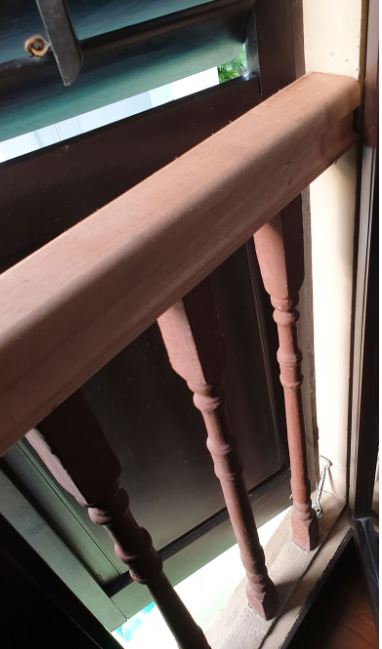
It’s far easier to replace damaged or old wooden fittings than to repair and refurbish them. Investing in repair, however, is far more sustainable for the planet.
This project brought us to do what we feel is important and somewhat lacking in Singapore: to repair and refurbish existing solid wood fittings.
Over the course of two weeks, we managed to complete our hit list of urgently needed works:
- Reinforced windows. The original window frames had a number of problems, such as short dowels made from softwood (which had rotted by then) and wrong installation (such as having the stops facing outwards, thus exposed to the elements, instead of inwards). We took the most unstable windows down, reinforced them with strong hardwood dowels and gave them a fresh coat of lacquer.
- Dismantled a termite-infested and eaten door frame and installed a new door frame. As the frame is non-standard in size, we made one from Chengal wood. The original door was reinstated.
- Dismantled a broken floor panel and installed a new Chengal wood panel
- Dismantled a termite-infested and eaten handrail and installed a new handrail. To our surprise, we were unable to find any retailers carrying the specific profile, so we made one from Nyatoh wood.

- Dismantled and replace two bathroom window frames. The original bathroom window frames were poorly designed and trapped water whenever it rains, leading to extensive rot. By the time we were called in, the glass panels were held in place by the owners with raffia string. Our craftsmen painstakingly made new frames from Chengal wood, this time with stronger dowels and adapted the design so that rain water would slip off rather than pool on the frame.

Repairing is always more challenging than making from scratch, as it means having to respect existing dimensions of other surrounding fittings and working round them. But knowing that we have played a role in lengthening the use life of these wooden fittings is ultimately rewarding.


